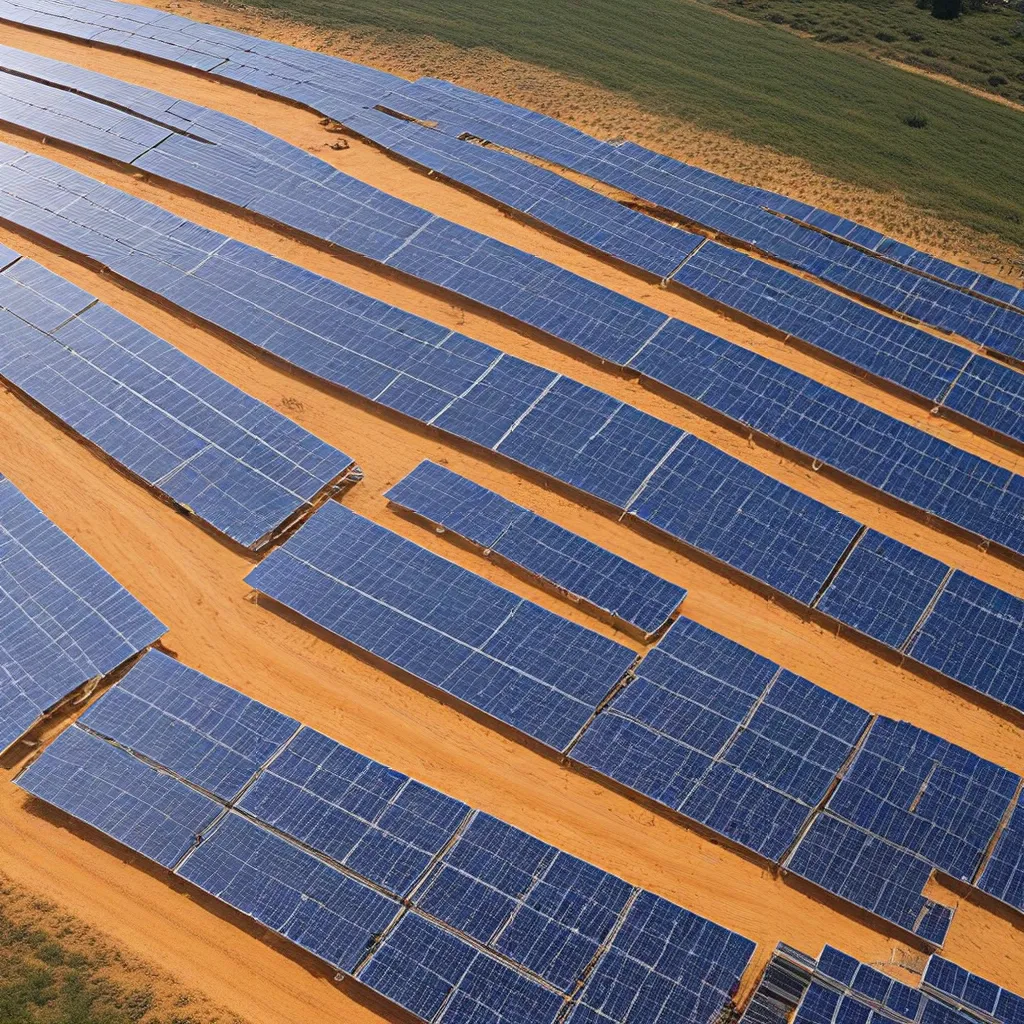
A Bright Future Powered by the Sun
Imagine a world where the boundless energy of the sun powers our homes, powers our cities, and powers our very way of life. It’s a vision that’s not as far-fetched as you might think. In fact, solar power is rapidly emerging as one of the most promising and innovative solutions to the global challenges we face today.
As I delve into the exciting world of solar-driven approaches, I can’t help but feel a sense of awe and wonder. The sun, that bright orb in the sky, is quite literally the answer to our energy prayers. With its sheer power and abundance, the sun outclasses anything human technology could ever produce. And the best part? It’s completely free, environmentally clean, and available for the taking.
Harnessing the Sun’s Limitless Potential
Now, I know what you’re thinking – if the sun’s power is so abundant, why isn’t the whole world running on solar energy already? The truth is, while solar power is rapidly growing as a global industry, it still faces some significant hurdles. But rest assured, the brilliant minds of the scientific community are working tirelessly to overcome these challenges and unlock the full potential of the sun’s energy.
One of the key barriers has been the relatively low efficiency of today’s solar cells. Most commercial solar cells made from silicon typically convert sunlight into electricity with an efficiency of only 10% to 20%. That means a lot of the sun’s energy is going to waste. But researchers are making exciting breakthroughs that could dramatically improve these numbers.
Nanocrystals and Multilayer Cells: Pushing the Efficiency Boundaries
One promising avenue is the use of nanocrystals. Experiments have shown that nanocrystals made from materials like lead and selenium can enhance the chance of releasing a second electron when hit by a photon, rather than just producing excess heat. This could boost the electric current output and push solar cell efficiency as high as 60% – a game-changing leap.
Another approach involves multilayer solar cells. While current standard cells have a theoretical maximum efficiency of 31%, new materials arranged in novel ways can exceed that limit, with some multilayer cells already reaching 34% efficiency. And the best part? Experimental cells have even surpassed 40% efficiency.
These advancements are truly remarkable, and they have me grinning from ear to ear. Just imagine – solar panels that are nearly twice as efficient as what we have today. That’s the kind of game-changing innovation that could revolutionize the way we power our world.
Reducing Costs through Material Breakthroughs
But efficiency isn’t the only hurdle. The manufacturing costs of solar cells have also been a significant barrier to widespread adoption. Current solar cell designs require high-purity and therefore expensive materials, as impurities can block the flow of electric charge. However, researchers are exploring new materials that could dramatically reduce these costs.
One promising approach involves the use of thin layers of materials that would only require charges to travel a short distance, diminishing the impact of impurities. Another strategy involves cylindrical or nanorod-based cells, where light could be absorbed down the length of the rods while charges could travel across the narrow width.
Imagine a world where solar power is not only efficient but also affordable for everyone. That’s the kind of future we’re talking about here, and it’s closer than you might think.
Solving the Storage Challenge
But even with these advancements in solar cell technology, there’s still one major hurdle to overcome: the need for efficient energy storage. After all, the sun doesn’t shine 24/7, and we need a way to capture and store its energy for when it’s needed most.
The good news is that researchers are exploring a wide range of innovative storage solutions, from large-scale battery banks to systems that mimic the natural process of photosynthesis. Imagine a future where we can harness the sun’s energy during the day and use it to power our homes and businesses long into the night.
One particularly promising approach is the use of hydrogen fuel cells. By using solar power to split water and generate hydrogen, we can create a clean, sustainable fuel that can be stored and used to generate electricity when needed. This not only solves the storage problem but also opens up the possibility of a truly emissions-free energy economy.
And the best part? Fuel cells have the added benefit of being distributed systems, avoiding the vulnerabilities of centralized power generation. Imagine a world where every home and business has its own little solar-powered fuel cell, providing reliable and resilient energy on demand.
A Brighter, Cleaner Future Powered by the Sun
As I reflect on the incredible potential of solar power, I can’t help but feel a sense of excitement and optimism. The sun, that eternal source of light and life, is poised to become the cornerstone of our energy future. And with the tireless efforts of researchers and innovators, we’re on the cusp of realizing this vision.
Sure, there are still challenges to overcome, but the future has never looked brighter. From nanocrystals to multilayer cells, from cost-saving materials to innovative storage solutions, the sun-powered solutions of tomorrow are truly awe-inspiring.
So, what are you waiting for? Join me on this journey towards a brighter, cleaner future, where the sun’s boundless energy powers our homes, our cities, and our very way of life. Let’s harness the power of the sun and create a more sustainable, prosperous world for all. After all, the future is plugged in and ready to save.